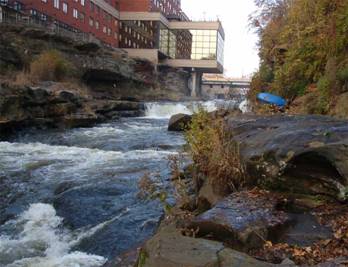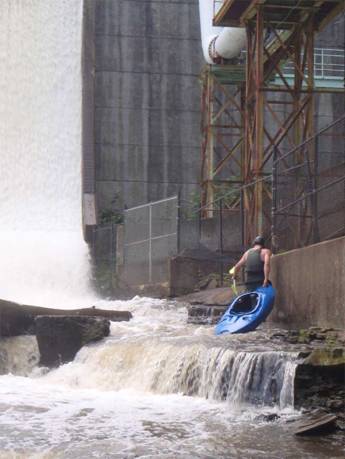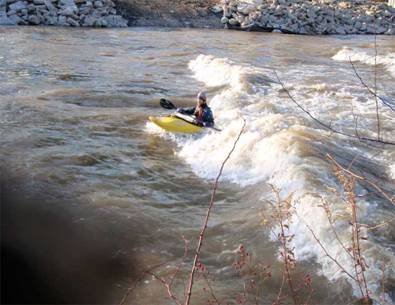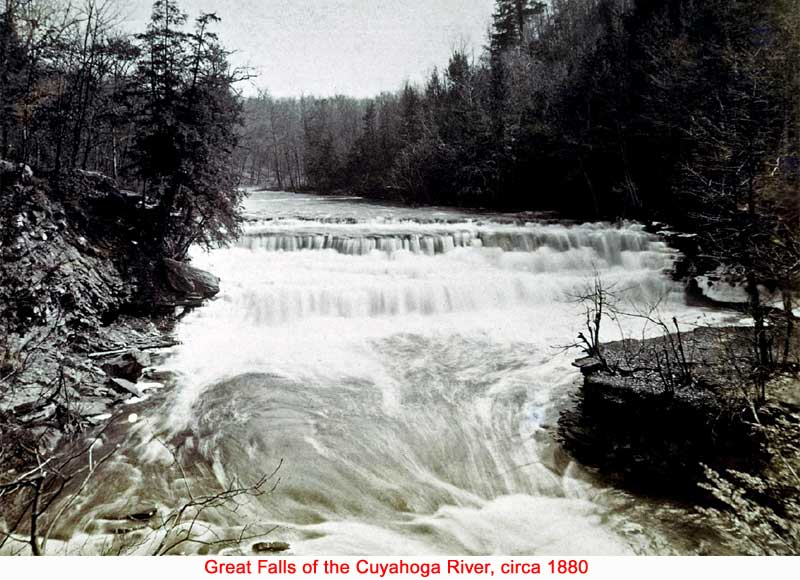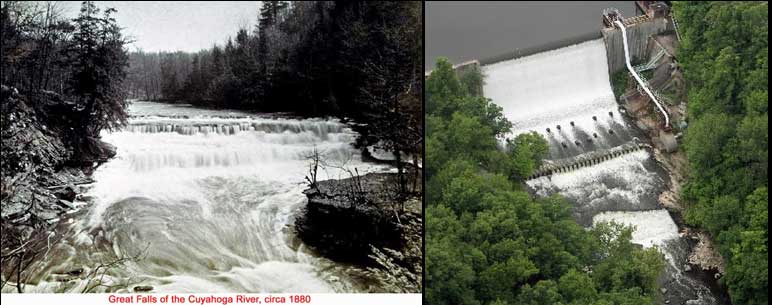Submitted by Karl Nelson
The Keelhaulers Canoe Club has long advocated for the removal of the Gorge Dam in the Cuyahoga River, and with the release last year of the Ohio EPA/TetraTech engineering report, that reality has taken a big step forward. But there are still lot of questions about the next steps in the process. That’s why WKSU is revisiting the discussion through a public forum in Cuyahoga Falls. Here are some of the details:
WHAT: WKSU Exploradio public forum - The Gorge Dam Removal Project – One Year Later
WHEN: Sept. 21st, 2016, 6:30-8:30 PM
WHERE: Sheraton Suites, Cuyahoga Falls
WHO: The panel includes: Bill Zawiski, Ohio EPA; Lisa King, director, Summit MetroParks; David Hill, member American Whitewater and KHCC, REPRESENTATIVE, City of Akron
It’s been one year since the Ohio EPA released its engineering report on the proposed $70-million removal of the Gorge Dam in Cuyahoga Falls. This forum brings together many of the stakeholders in the project in a public discussion of the feasibility of the project and its effect on the future of the Cuyahoga River.
As you see, we’ve asked David Hill to represent your group - and he has agreed. But I also want to invite you to attend and to help spread the word.
Yours,
Jeff St.Clair, host/reporter, WKSU-fm, stclair@wksu.org
August 6, 2016
 |
One of the last two dams on the Cuyahoga River is going to be removed, likely in 2017 or '18. Akron and Cleveland will share the cost, along with the US and Ohio EPAs. The dam has no real use, so it's simply a navigation hazard (a low-head dam "drowning machine", a barrier to fish migration, and a generator of low oxygen levels in the river. Its only use is to hold water for the historical canal, which parallels the river. Because of the interest in the canal, demolition plans include a pump station to fill the canal. Read the Plain Dealer article here. A public hearing on the project took place on September 7, 2016. Unfortunately, we currently have no info on the public hearing. |
Update from American Whitewater – December 22, 2015
Background: H.R. 8 is a comprehensive energy bill that has some very troubling implications for rivers with private and municipal hydropower dams. The hydropower provisions of the bill make it harder to protect and restore rivers impacted by hydropower dams by allowing operators to ignore federal and state laws that protect water quality, endangered species, fish, wildlife, recreation and public lands. It strips states and Native American tribes of their existing authority to hold dam owners accountable for pollution and damage to local rivers and communities, as well as federal agencies to protect fish and other aquatic species. It also would have made it easier to build new dams on freely flowing rivers.
Update: The House passed H.R. 8 on December 3rd. Your efforts DID make a difference though, and hope is not lost for the future. The outcry from the paddling community was strong (over 700 of you reached out to your Representatives in a 24 hour period before the vote), stirring a lot of controversy around the hydropower provisions. The bill passed on nearly a party line vote, and the hydropower industry’s effort to make this a bipartisan initiative largely flopped. The bill goes to the Senate next, and this controversy will make it more difficult for the hydropower provisions to move forward.
Additionally, the Obama Administration issued a Statement of Administration Policy noting that the President would likely veto the bill in its current form, in large part because of the hydropower provisions. The SAP states that H.R. 8 would “undermine the current hydropower licensing regulatory process…that works to minimize negative impacts associated with the siting of hydropower projects, including negative impacts on safety, fish and wildlife, water quality and conservation, and a range of additional natural resources and cultural values.” It certainly is an incredible achievement to have the President single out this portion of the bill.
Land and Water Conservation Fund (LWCF)
Background: As “America’s best conservation program,” the LWCF has helped to build trails, parks, river access, trailheads and so much more for over 50 years in all 50 states. This vital program has funded key river access points on Washington’s White Salmon and Green Rivers, Idaho’s Salmon River, Colorado’s Arkansas River, Georgia’s Chattooga River, and dozens of others across the country.
LWCF uses a portion of the royalties from off-shore oil and gas leasing to fund outdoor recreation and conservation projects, and was set to expire on September 30th, 2015. American Whitewater’s members and other outdoor enthusiasts wrote to their Congressional Representatives in support of LWCF, and AW staff and members visited D.C. to highlight its value.
Update: Despite having broad bi-partisan support, Congress let the LWCF expire. Shortly afterwards, Representative Rob Bishop (R_UT) introduced a zombie LWCF bill that would have made the program a shell of its former self. The overall outcry from the outdoor recreation community was huge. Fortunately, Congress took note and reauthorized the program for 3 years at $450 million in the Omnibus bill it recently passed. Although this is 1/2 the amount that LWCF was historically slated to receive ($900 million) and is a temporary solution, we see this as a pretty great first step. In the current political climate and with a zombie bill in the works, it’s great news that the program still looks a lot like its former self. Plus, $450 million is actually 50% more than the fund has seen in the last few years.
by Matt Muir
Update (8/17/13): The Sheraton and LeFever Dams have essentially been removed. The project was delayed by high water, but once begun it went quickly. The river is already re-forming in its natural flow pattern.
See the removal of the Sheraton Dam in 30 seconds.
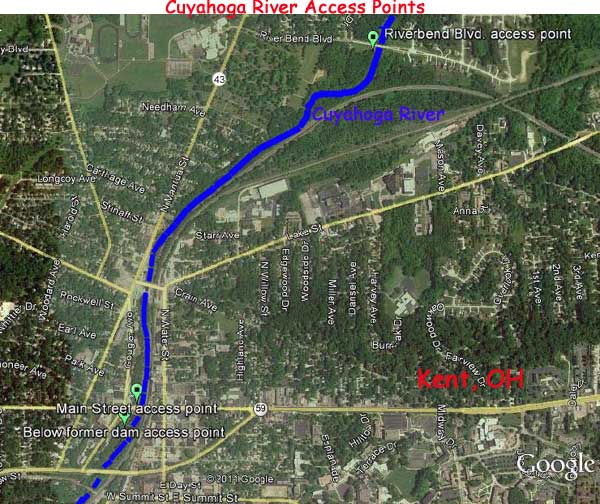
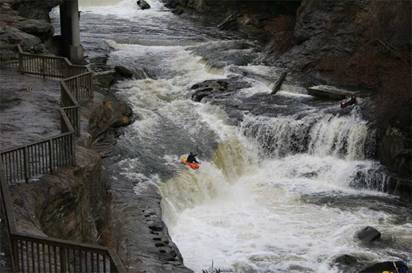
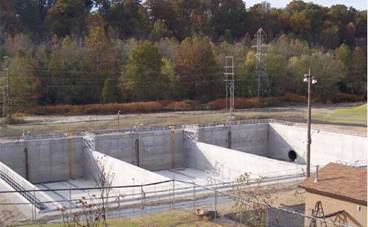
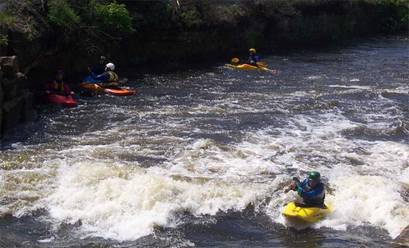
 Of course you should, unless you don’t mind driving to other states or believe that myth about no whitewater in Ohio! Currently
we have some very good options for all levels of paddler experience. The extreme upper reaches (above Lake Rockwell) provide Class I float opportunities in a more rural setting. From below Lake Rockwell all the way to Cuyahoga Falls is another Class I-II section that allows the paddler to stay in a mostly natural setting with urban influences. In Kent, the unaware
could get wet! However, the experienced paddler will get wet and smile.
Of course you should, unless you don’t mind driving to other states or believe that myth about no whitewater in Ohio! Currently
we have some very good options for all levels of paddler experience. The extreme upper reaches (above Lake Rockwell) provide Class I float opportunities in a more rural setting. From below Lake Rockwell all the way to Cuyahoga Falls is another Class I-II section that allows the paddler to stay in a mostly natural setting with urban influences. In Kent, the unaware
could get wet! However, the experienced paddler will get wet and smile.